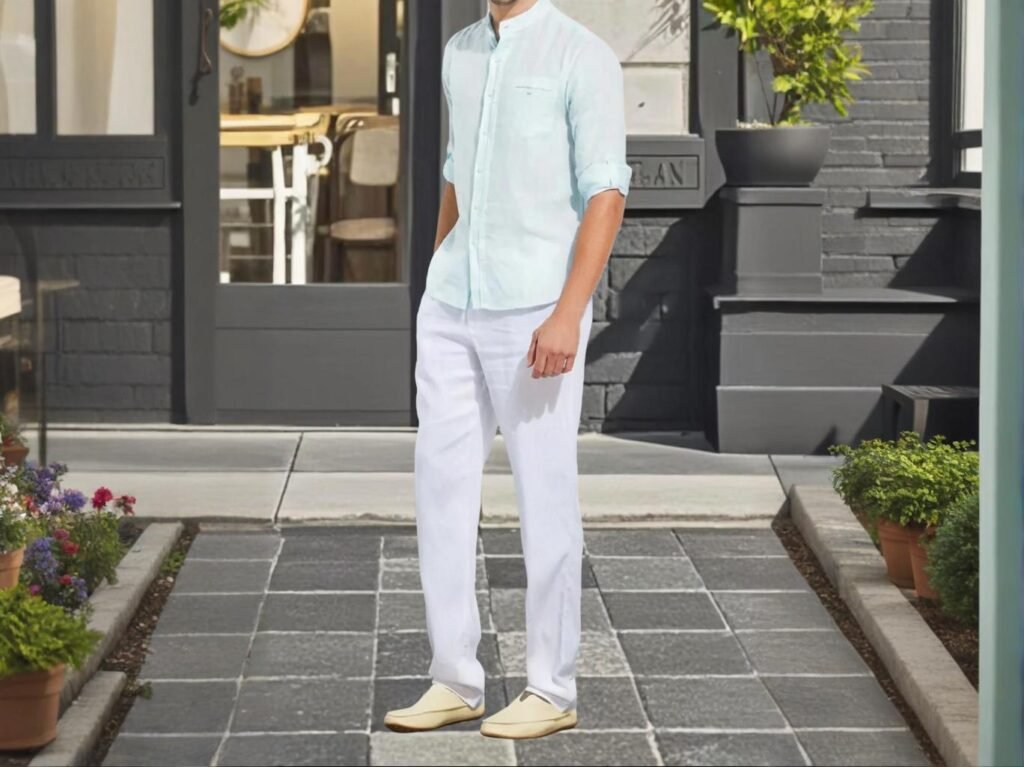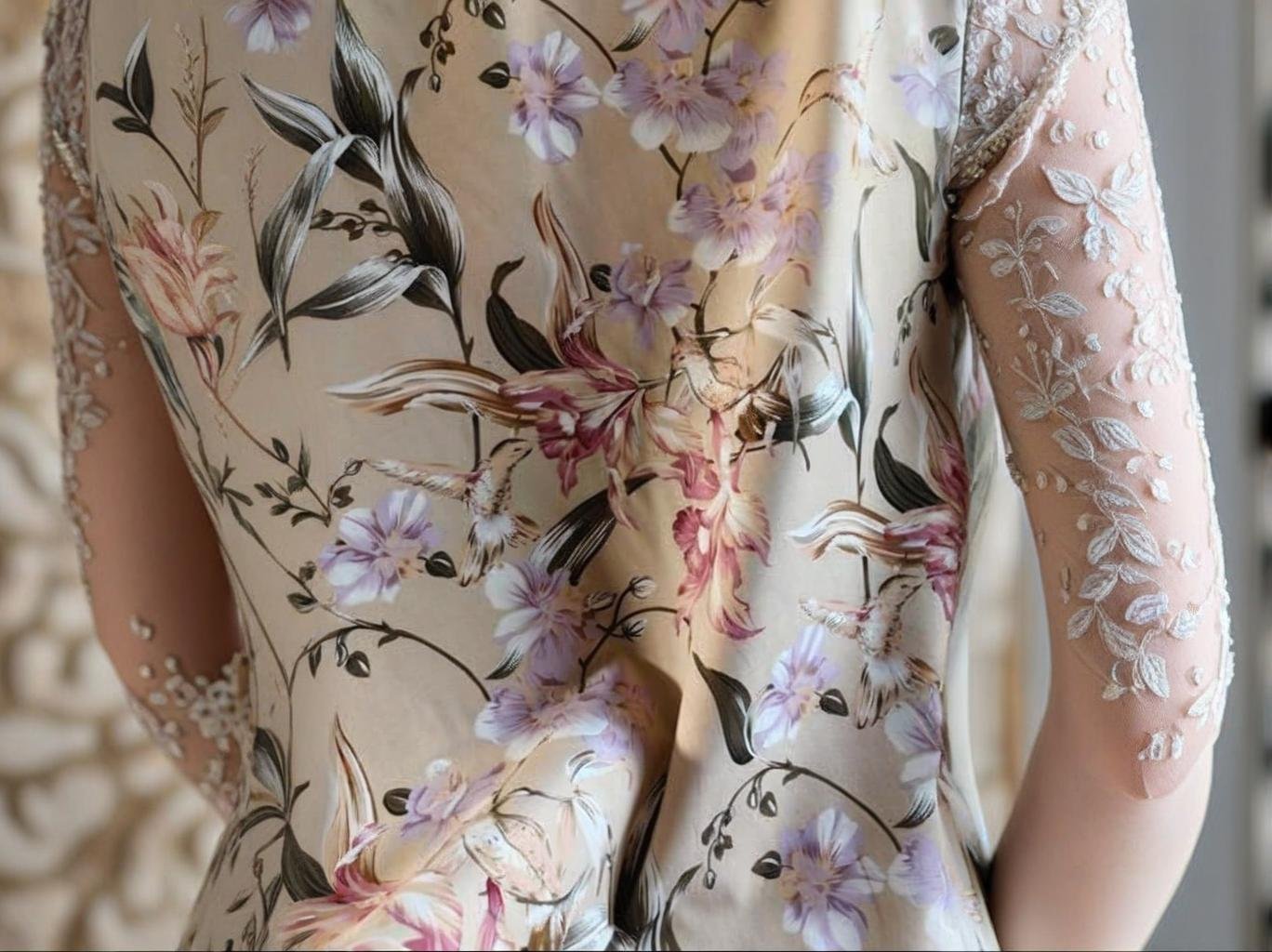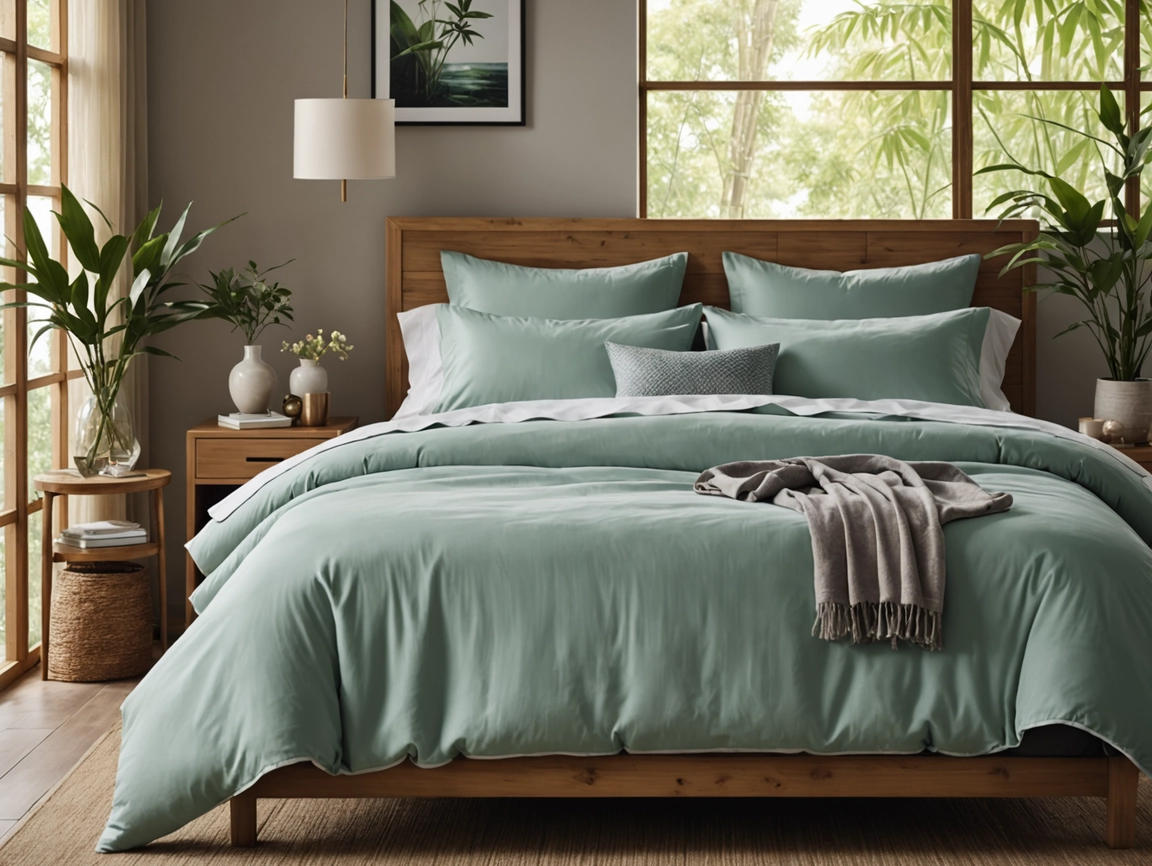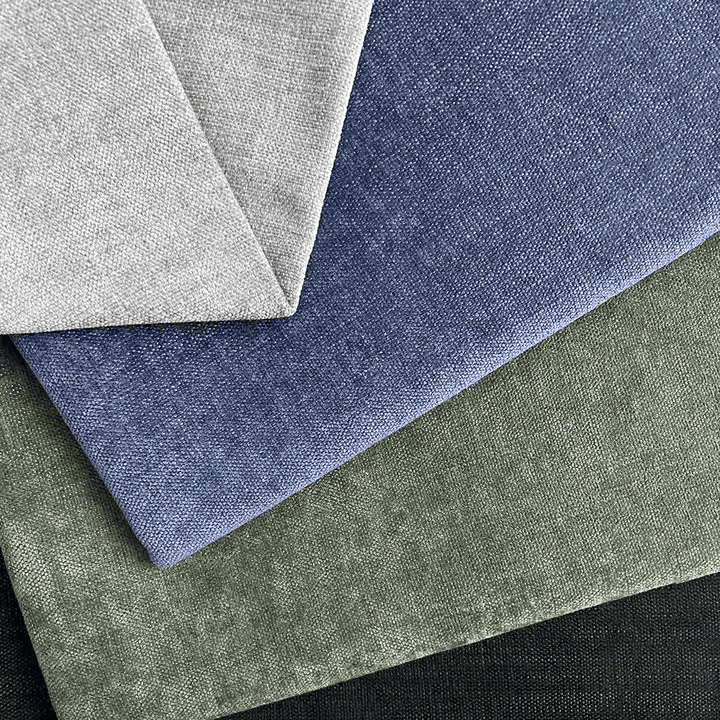Cotton Linen Fabric GSM Chart: Weight Classifications for Different End Uses

When you feel the cozy embrace of a cotton-linen blend, you might not realize that its comfort starts from the fabric’s weight—its GSM. That’s the science whispering through every thread. GSM, or grams per square meter, is the secret scale that governs softness, durability, cost, and best end use. It’s not just a number; it’s the blueprint behind every garment, curtain, or cushion.
GSM is the primary indicator of how a cotton-linen fabric will perform in different end uses—lighter GSM (100–200) tends toward soft, breathable apparel, while heavier weights (250+ GSM) hold up better in home decor and upholstery.
To show how powerful this info can be, let me share a quick story: A startup interiors brand ordered 200 GSM linen-cotton for summer cushions and loved the look—but customers complained about sagging pillows within weeks. Switching to 320 GSM on the next run not only resolved the sag but earned 30% more repeat orders. Curious how different GSM classes shape product performance? Stick around; good things ahead.
1. What Does GSM Mean in Cotton Linen Fabric and Why Is It Important?
If you’ve ever seen a fabric labeled “250 GSM,” you might have glanced and moved on. But that number holds the key to knowing how the fabric drapes, feels, and lasts. GSM measures the weight of a square meter of fabric and translates directly into performance.
GSM in cotton-linen fabric represents its density and determines crucial factors like drape, insulation, durability, and pricing—making it fundamental to choosing the right textile for your purpose.
Why GSM Matters
- Drape & Hand Feel:
- 100–150 GSM feels light and floaty—ideal for summer shirts and scarves.
- 200–250 GSM provides autumnal warmth without sacrificing breathability.
- 300+ GSM creates structure—perfect for upholstery and structured goods.
- Durability & Maintenance: Heavier fabrics (300+ GSM) are more wear-resistant but may need stronger washing cycles.
- Cost Impact: Higher GSM generally means higher yarn usage—and higher price per yard. Manufacturers often price a 300 GSM at 10–25% above a 200 GSM of the same composition.
2. How Is GSM Measured in Cotton Linen and What Tools Are Used?
You can’t guess GSM—it’s measured with precision. Fabric specialists use standard tools to ensure consistency and reliability in GSM readings, critical for specifications and sourcing.
GSM is measured using a fabric cutter and precision scale, ensuring accuracy within ±1 g per square meter, which is essential for consistent product performance and quality control.
Measurement Process
- Sample Cutting: A fabric cutter typically extracts a 100 cm² sample (0.01 m²).
- Weighing: The trimmed sample is weighed on a precision scale (±0.01 g).
- Calculation: Measured GSM = (weight in grams) / 0.01 m² = grams per square meter.
Tools to know:
- ASTM D3776 fabric cutter and balance
- Industrial lab scales with calibration
- Digital GSM analyzers used in spinning mills
Accuracy & Sampling Considerations
| Sampling Method | Pros | Cons |
|---|---|---|
| Single cut sample | Fast | Less representative |
| Multiple corner cuts | More accurate average | Takes more time |
| Roll sampling | Best for bulk consistency | Requires handling |
This precision ensures buyers and suppliers speak the same language when referring to “200 GSM.” It avoids surprises like overly light or heavy shipments post-production.
3. What Are the Common GSM Ranges for Cotton Linen Fabrics?
Different textile applications demand different weights. Understanding standard GSM ranges helps you match your fabric selection to the specific product’s needs. Cotton linen blends have an especially wide GSM spectrum—from breezy shirts to weighty upholstery.
Common GSM ranges for cotton-linen fabric are: 100–150 for lightweight wearables, 180–250 for medium-weight multipurpose textiles, and 300+ for heavy-duty upholstery or industrial use.
GSM Classification Table by Use
| GSM Range | Classification | Common Applications | Characteristics |
|---|---|---|---|
| 100–150 | Lightweight | Summer shirts, tunics, scarves, babywear | Breathable, soft, semi-sheer |
| 150–200 | Light-Medium | Everyday shirts, dresses, table runners | Drapey, slightly structured |
| 200–250 | Medium Weight | Trousers, aprons, curtains, bed linens | Durable, warm, moderate drape |
| 250–300 | Medium-Heavy | Workwear, structured tops, chair covers | Stronger structure, good fall |
| 300–400+ | Heavyweight | Upholstery, tote bags, cushions, jackets | Thick, robust, textured surface |
Case Insight:
A small UK menswear label shifted from 160 GSM to 210 GSM for its winter shirts after customer feedback mentioned “see-through fabric.” The result? A 40% drop in return rates during the next season and better reviews on durability and warmth.
4. Which GSM Is Suitable for Apparel, Upholstery, Curtains, and More?
The end use of the fabric determines its ideal GSM. Apparel demands comfort and movement; upholstery needs structure and abrasion resistance. Misaligning GSM with the product function can lead to product failure or overproduction costs.
Light GSM (100–180) is ideal for apparel, mid-range GSM (200–250) suits drapery and soft furnishings, while heavier GSM (280+) is best for structured items like upholstery and bags.
Application-Specific GSM Guidelines
For Apparel
- Men’s & Women’s Shirts: 130–170 GSM
- Dresses & Tunics: 140–180 GSM
- Workwear & Jackets: 200–250 GSM
For Home Textiles
- Curtains & Drapes: 180–240 GSM (lighter for flowing styles)
- Tablecloths & Napkins: 200–220 GSM
- Bed Linen: 160–240 GSM based on climate
For Upholstery
- Sofa & Chair Covers: 300–400 GSM
- Cushion Covers: 250–350 GSM
- Bench Upholstery: 350+ GSM with coating or reinforcement
| Product Type | Recommended GSM | Rationale |
|---|---|---|
| Summer Shirt | 120–140 | Breathability, light drape |
| All-Season Dress | 150–180 | Balance between structure and airiness |
| Linen Curtain | 200–250 | Coverage with gentle flow |
| Cushion Cover | 280–320 | Handles stuffing and pressure |
| Dining Chair Fabric | 320–400 | High abrasion tolerance and structure |
This alignment ensures comfort where needed and resilience where expected.
5. How Do Thread Count and Weave Density Relate to GSM?
While GSM reflects the weight of a fabric, thread count and weave density indicate structural tightness and feel. Many people confuse these terms, but in textile engineering, they represent different attributes.
Thread count and weave density influence GSM but are not directly proportional—thicker threads with lower thread count can still produce high GSM fabric, and vice versa.
Understanding Fabric Construction
Key Concepts:
- Thread Count = Number of threads per square inch (warp + weft)
- Weave Density = How tightly threads are packed together
- Yarn Thickness = Affects GSM more than thread count
| Thread Count | Yarn Type | Weave Type | Approx. GSM | Fabric Behavior |
|---|---|---|---|---|
| 120 | Thick yarns | Plain weave | 250–280 | Strong, coarse texture |
| 200 | Medium yarns | Twill weave | 220–260 | Durable, flexible |
| 300+ | Fine yarns | Sateen | 180–230 | Smooth, breathable |
Common Misconception:
Some buyers assume higher thread count means higher quality. But for linen-cotton blends, a balanced thread count (160–220) with quality yarn often outperforms ultra-high-thread-count fabrics in durability and feel.
Real-World Example:
A hospitality linen supplier switched from 300TC fine cotton to a 180TC cotton-linen blend with a tighter weave. Though GSM remained similar (around 230), the durability improved by 30%, and laundering costs dropped due to less fabric pilling.
6. What Is the Role of Cotton-Linen Blending Ratio in GSM?
The ratio of cotton to linen in a fabric blend significantly impacts GSM and textile behavior. Each fiber brings distinct properties—cotton is softer and denser, while linen is stronger, lighter in mass, and more breathable.
Higher linen ratios often lower GSM while increasing tensile strength and breathability, whereas more cotton tends to raise GSM and add softness and density.
Blend Ratio Effects on Weight and Performance
| Cotton\:Linen Ratio | Typical GSM | Characteristics |
|---|---|---|
| 70:30 | 220–280 | Heavier, soft hand feel, drapes well |
| 50:50 | 200–240 | Balanced texture, mild crispness, moderate weight |
| 30:70 | 160–200 | Light and airy, wrinkly texture, highly breathable |
Blend Strategy Tips:
- Use 70:30 for shirting and structure-heavy garments.
- 50:50 is ideal for multipurpose fashion or home use.
- 30:70 performs best in hot-climate apparel or bedding.
Humanized Insight:
A fabric supplier in Australia developed a summer-weight 30:70 blend shirt fabric (GSM 165) that became a hit among eco-conscious brands. Despite being lightweight, the linen’s tensile integrity allowed for fewer failures during mass production.
GSM Doesn’t Tell the Whole Story:
Blending also affects shrinkage, drape, dye uptake, and durability. So GSM should always be viewed alongside the blend ratio and weave type for a full performance picture.
7. How Do Finishing Techniques Affect Final GSM Readings?
GSM isn’t always fixed at the loom. Finishing processes—such as washing, calendaring, brushing, or coating—can raise or lower the final GSM of cotton-linen fabric by altering its density, texture, and moisture retention.
Yes, finishing treatments can shift GSM by 5–15%, making it essential to review post-finishing specs rather than raw loom-state data.
Common Finishing Processes and Their GSM Impact
| Finishing Technique | GSM Impact | Description |
|---|---|---|
| Pre-shrinking | Slight decrease | Reduces shrinkage post-wash, slightly compresses fabric |
| Calendaring | Increase (5–8%) | Mechanical pressing for smoothness and weight |
| Brushing | Increase (up to 10%) | Adds fluff, improves hand-feel, increases perceived weight |
| Resin Coating | Increase (10–15%) | Adds stiffness, water resistance, or stain control |
| Enzyme Wash | Decrease | Softens fabric, slightly reduces GSM |
Practical Case Study:
A home textile exporter in Portugal reported that a 250 GSM unfinished fabric rose to 270 GSM after calendaring and coating. Clients assumed they were getting a heavier weave, but it was the finishing that added bulk—not yarn.
Takeaway:
Always compare GSM in post-finish state, especially if sourcing from suppliers offering multiple surface treatments. If you’re aiming for lightweight drapability, avoid over-processed materials that artificially inflate GSM.
8. What Should Buyers Consider When Comparing GSM Across Suppliers?
Comparing GSM across global suppliers can be tricky. Differences in measurement standards, post-processing, and blend interpretation can lead to misaligned expectations or even costly reorders.
Buyers should request consistent sample testing, define GSM in finished-state only, and cross-check with actual fabric behavior—not just numbers.
Key Factors Buyers Must Evaluate
1. Measurement Method Consistency
- Use ISO 3801 or ASTM D3776 standard
- Ensure samples are cut from the same area (center vs edge GSM varies)
2. Finish-Stage Specification
- Clarify: GSM before or after treatment?
- Suppliers may quote loom-state GSM to sound lightweight
3. Weave, Yarn, and Blend Transparency
- Request full tech pack: fiber content, weave type, yarn weight, finish description
- GSM alone doesn’t tell you how a fabric will perform
4. Real-Life Testing
- Always order swatches and run washing + wear tests
- Evaluate how GSM translates into user experience
Sample Evaluation Table
| Supplier | Claimed GSM | Actual GSM (post-wash) | Fabric Hand | Transparency |
|---|---|---|---|---|
| A (India) | 210 | 198 | Soft, loose | High |
| B (China) | 230 | 235 | Crisp, durable | Medium |
| C (Turkey) | 250 | 250 | Dense, smooth | Low |
Customize Your Fabric Strategy with Szoneier
If you’re navigating the complex world of cotton-linen GSM classifications, SzoneierFabrics can simplify the process. With full control over yarn selection, weave, blending ratios, and post-finishing techniques, we offer fully customized fabric development for every end use—from fashion to upholstery.
Request free samples, explore low MOQ customizations, or speak with a fabric expert today to get a tailored quote that fits your design and performance needs.
cotton linen fabric gsm, linen fabric gsm chart, cotton linen gsm guide, fabric weight classifications, cotton linen fabric weight, gsm for linen fabric, lightweight linen gsm, heavyweight linen gsm, gsm for shirts fabric, cotton linen fabric for shirts, gsm for upholstery fabric, linen blend fabric weight, gsm comparison cotton vs linen, best gsm for summer linen, cotton linen blend properties, what is gsm in linen, cotton linen fabric durability, gsm and fabric strength, how to measure fabric gsm, linen fabric types by gsm, gsm for breathable fabrics, cotton linen fabric for curtains, gsm chart for fabric buyers, choosing fabric by gsm, cotton linen fabric supplier, gsm testing fabric standards, custom gsm fabric production, gsm effect on fabric quality, gsm fabric for clothing, gsm based textile sourcing
Can't find the answers?
No worries, please contact us and we will answer all the questions you have during the whole process of bag customization.
Make A Sample First?
If you have your own artwork, logo design files, or just an idea,please provide details about your project requirements, including preferred fabric, color, and customization options,we’re excited to assist you in bringing your bespoke bag designs to life through our sample production process.



